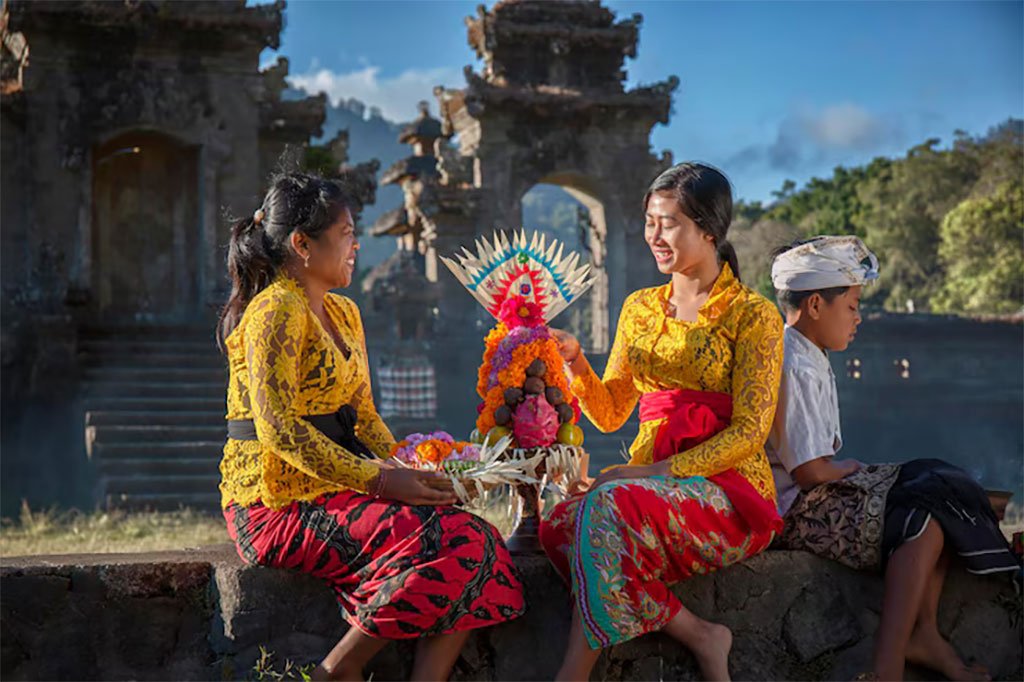The Balinese Way: Understanding Social Etiquette and Respect
When you think of Bali, you might picture stunning beaches, vibrant temples, and lush landscapes. But beneath the island’s breathtaking beauty lies... Read More

Bali is more than its pristine beaches, lush emerald rice terraces, and vibrant party scenes. Beneath the tropical paradise lies a deep, spiritual, and colorful tapestry of customs that shape daily life. For travelers seeking a truly immersive experience, understanding local traditions is not just fascinating—it’s a sign of respect and opens doors to authentic connections. Here are seven pivotal Balinese customs that every visitor should know, explained in detail and sprinkled with insights, tips, and colorful anecdotes.
Canang Sari—bright little baskets made from coconut leaves, filled with flowers, food, and incense—is the most ubiquitous religious symbol you’ll see in Bali. These daily offerings express gratitude to the gods (Hyang), maintain cosmic balance (Rwa Bhineda, the duality of life), and ward off evil spirits.
Visiting a family compound, you might witness women skillfully weaving palm-leaf trays before sunrise. Each element is symbolic:
Expect to step over them on sidewalks, in shops, in front of cars—even atop ATM machines. Never treat them as trash. Walk around them with care, or silently say a small prayer before stepping aside.
This combination of Sanskrit and Balinese is the standard greeting meaning “Peace and greetings from God.” It’s both spiritual and social—a small phrase carrying warmth and cultural depth.
Using it demonstrates respect for local tradition. Balinese often smile broadly in response, and your effort is deeply appreciated.
A UNESCO World Heritage site since 2012, the Subak system is a testament to centuries-old communal cooperation. Farmers manage water flow through shared temples and meetings, distributing rice-field irrigation in sync with natural cycles and religious rites.
At Tegallalang, Jatiluwih, or Sidemen, you’ll see perfectly layered paddies carved into hillsides. Many farmers will invite you to walk among the terraces—walking them is easy, but always ask permission first.
Temples (pura) are omnipresent—from sea temples perched on cliffs to hidden jungle sanctuaries. Each has its own rituals and traditions, but most share basic etiquette rules.
Performed by male chorus singers in a circle, the dynamic “cak‑cak‑cak” rhythm builds into dramatic retellings of the Ramayana—the clash of good vs. evil, sometimes with a dramatic ring of fire. Popular sunset spots include Uluwatu Temple or Ubud.
Barong, a mythical lion-dog creature, battles Rangda, the gorier witch character. The masks and makeup are elaborate; the performance feels primal and deeply spiritual. It’s more than entertainment—it’s ritual.
Food is central to Balinese ceremonies. Rice, fruits, meats, cakes, and sometimes live offerings (fish, dogs) are prepared with solemnity and devotion. Several dishes are common across offerings and banquets.
Nyepi, the Balinese New Year, usually falls in March (210th day of Pawukon calendar). It’s a day of complete silence from sunrise to sunrise: no flights, no vehicles, no electricity, no entertainment—no exceptions.
You’ll observe beginning-of-day midnight chaos (Ogoh-Ogoh parades and Demon processions), but the real magic is the stillness that follows. Streets empty, animals wander free, and the entire island meditates.
While not a ritual, Tri Hita Karana is the guiding principle behind everything—from Subak to architecture. It emphasizes harmony between:
By appreciating daily offerings and environmental rituals, you naturally align with the Tri Hita Karana mindset.
1. Learn a few Balinese words
“Om Swastiastu,” “Suksma” (thank you), “Ida Sanghyang Widi Wasa” (God in entirety) – locals love visitors who learn even small phrases.
2. Dress respectfully
Pack a sarong and sash or plan to buy one at your first temple visit. Cover shoulders and knees in sacred or traditional settings.
3. Participate but don’t intrude
If you’re invited to help craft offerings or join prayers, do—but always follow local cues.
4. Keep offerings sacred
Never step on or kick them aside. If on pathways, walk around them. If you accidentally step on one, a respectful quick moment of apology or prayer goes far.
5. Plan for ceremonies
Check local calendars; villages hold odalan every 210 days and large festivals regularly. Arriving during ceremonies offers a window into communal life.
6. Enjoy performances thoughtfully
Arrive early, stay alert, and show gratitude after the show. Leave respectfully at end—not in the middle.
7. Respect Nyepi wholeheartedly
It’s a privilege to experience Nyepi. Think of it as a rare pause in your busy life.
These customs are the language of the soul of Bali—revealing how Balinese people view the cosmos, life’s dualities, and the pursuit of cosmic harmony. As a visitor, you’re not just observing—you’re participating in threads of history, belief, and community that go back centuries.
Rather than a checklist, let these traditions be invitations:
Each custom deepens your connection—to Bali’s people, to Bali’s land, and to Bali’s heart.
Bali offers more than beaches and nightlife—it offers a deep spiritual current. By learning and honoring these seven traditions—Canang Sari, respectful greetings, Subak system, temple customs, theatrical art, ceremonial foods, and the silent power of Nyepi—you transform your visit into a journey of cultural enrichment. It’s a journey that goes well beyond tourist snapshots, letting you walk alongside Bali’s sacred rhythms and understand why locals say “Don’t just take Bali; feel Bali.”
So grab a sarong, savor incense-laced air, and say “Om Swastiastu” with open heart. Welcome to the real Bali, where every rice stalk, every temple stone, and every sun-setting chant is alive with meaning.
Join The Discussion